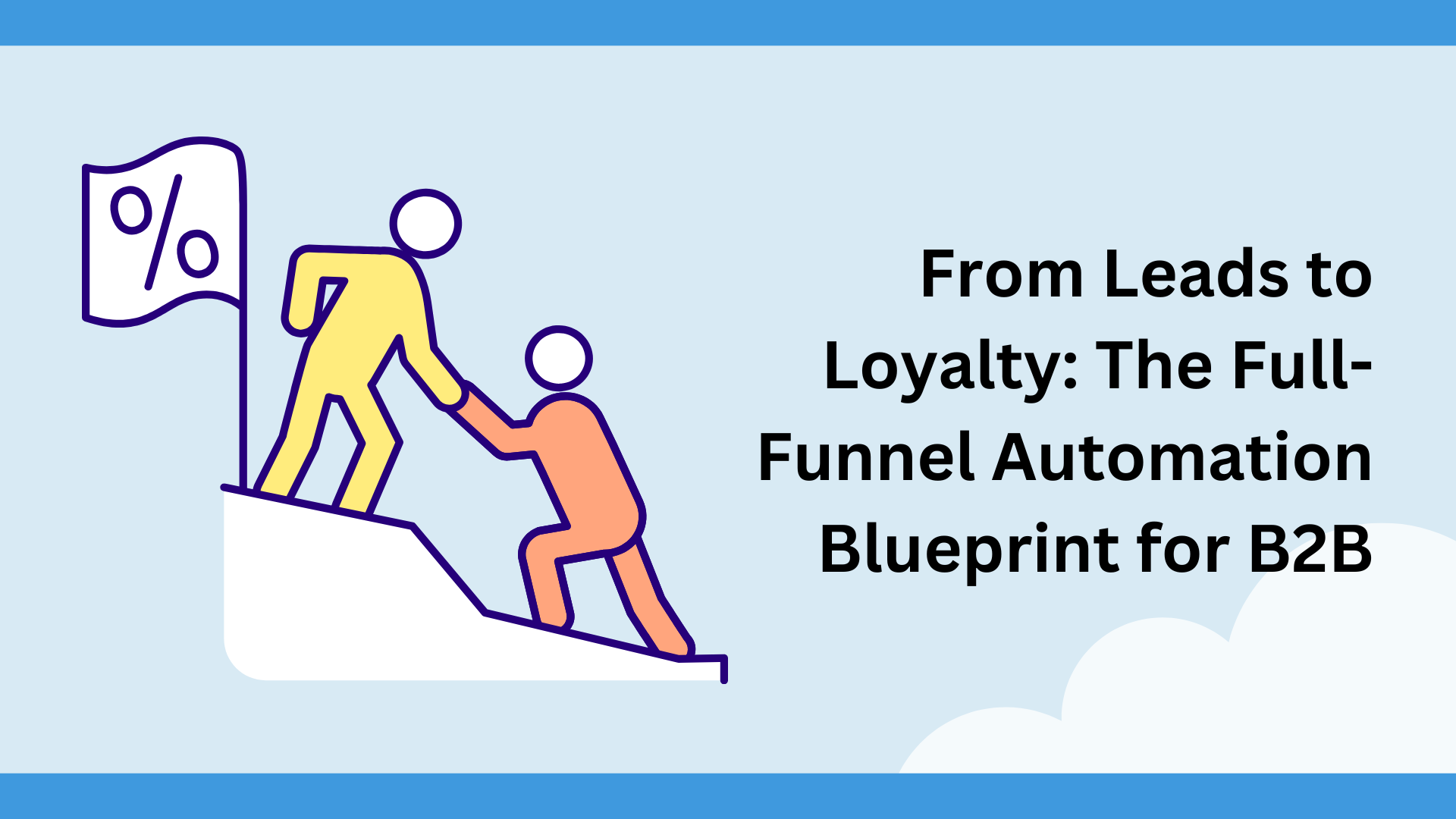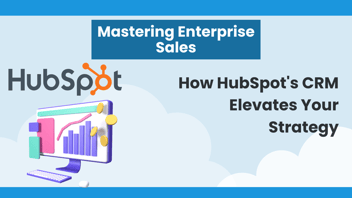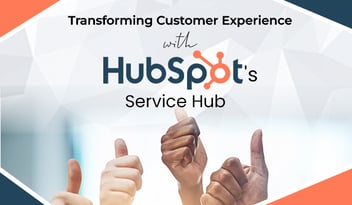B2B marketing automation has evolved from a helpful tool to a foundational requirement. In today’s landscape, where buyer journeys are long and expectations are high, businesses can’t afford to rely on disjointed systems or manual follow-up. To scale sustainably, convert consistently, and retain intelligently, you need more than a few nurture emails or a smart CRM. You need a full-funnel automation system that supports every phase of the lead to customer journey—from initial awareness all the way to renewal and advocacy.
This article outlines how to build that system. We’ll cover why it's critical, how to structure your funnel for automation, and what tools and workflows actually move the needle in 2025 and beyond.
Why Full-Funnel Automation Matters Now More Than Ever
The modern B2B buyer journey isn’t linear. Buyers jump between channels, ghost for weeks, and often delay decisions for months. What hasn’t changed is their demand for relevance and responsiveness. According to McKinsey, companies using automation across the customer lifecycle grow revenue two to three times faster than their peers (source).
Full-funnel automation ensures you stay present and helpful through every twist in the journey. It's not about replacing humans—it’s about augmenting marketing, sales, and success teams with systems that ensure no lead is neglected, no handoff is fumbled, and no customer is left wondering, “What’s next?”
Understanding the B2B Funnel
To build automation that works, you first need to understand the structure of a typical B2B funnel. While the labels may vary, most organizations operate across four primary stages: top of funnel (awareness), middle of funnel (evaluation), bottom of funnel (decision), and post-sale (retention and advocacy). Each phase requires its own messaging, timing, and trigger points—and automation is what makes that orchestration possible.
Automating the Top: Attract, Capture, Segment
At the top of the funnel, your goal is to attract the right audience and capture their information efficiently. High-value content like eBooks, webinars, or industry reports can be paired with smart forms or gated experiences to turn anonymous traffic into leads. But the real value begins after the form fill.
Modern automation platforms allow you to enrich each contact with firmographic data, assign lead source tags, and segment based on behavior—all without lifting a finger. If someone downloads a report and visits your pricing page twice in the same week, they’re more than just a casual browser. That insight can automatically increase their lead score and prompt outreach from sales, while also placing them in a targeted email sequence built to nurture higher-intent prospects.
This is where sales funnel automation begins to shine: by keeping promising leads moving without waiting for someone to manually decide what comes next.
Mid-Funnel: Nurture With Context, Not Noise
The middle of the funnel is where most leads either progress or stall. Unfortunately, this is also where a lot of automation strategies become too generic. B2B buyers don’t want to be bombarded with irrelevant case studies or vaguely titled webinars—they want information that speaks directly to their stage of the journey and their specific challenges.
Effective mid-funnel automation adapts based on engagement. If a contact consistently engages with content related to a particular product line or service area, your system should shift messaging to reflect that interest. Lead scoring models can be used to rank readiness based on email interactions, website visits, and job titles, helping marketing and sales prioritize time and effort.
As leads warm up, automated alerts can notify sales reps when someone revisits key pages like pricing or product specs. According to Salesforce’s 2024 State of Marketing report, 67% of high-performing B2B marketers now use journey orchestration tools to tailor interactions and guide prospects more effectively through this stage (source).
Bottom Funnel: Don’t Just Close—Accelerate
Once a prospect enters the decision-making phase, automation can accelerate the sales cycle and ensure nothing slips through the cracks. This is the time to send personalized follow-ups after demos, deliver ROI calculators, and reinforce credibility with case studies.
Well-timed nudges—especially after periods of inactivity—can prevent drop-off. For example, if a proposal hasn’t been viewed within three days, a follow-up email can be triggered automatically, or an internal task can be generated for a rep to reach out personally. These are small automations, but they make a measurable difference in win rates.
Internal coordination also benefits from automation at this stage. When a deal moves to the “Contract Sent” stage, automated notifications can alert the legal team or sales ops for a final check, ensuring that internal processes keep pace with buyer momentum.
Post-Sale: The Forgotten Funnel Stage
Many B2B companies make the mistake of ending their automation strategy once the deal closes. But the customer journey is far from over. In fact, post-sale engagement often determines whether you gain a loyal customer or simply fulfill a contract.
Automation at this stage should focus on onboarding, engagement, and renewal. Once a deal closes, new customer welcome emails, documentation access, and scheduled onboarding calls can all be automatically triggered. Feature usage can be monitored to detect drop-offs or upsell opportunities, while satisfaction surveys and NPS tracking can identify your happiest customers—the perfect candidates for case studies or referral programs.
The loyalty loop is where growth becomes sustainable. If you’re not building automation to support it, you’re losing long-term revenue without even realizing it.
Tech Stack and Integration: Your Ecosystem Matters
A well-built automation blueprint isn’t just about strategy—it’s also about tools that talk to each other. At a minimum, you need a CRM, a marketing automation platform, a sales engagement tool, and ideally, a customer success platform.
These tools should work in sync, so that when someone downloads a whitepaper, that data flows to your CRM, triggers a lead score update, alerts the sales team if relevant, and places the contact in a nurture campaign—all within seconds. This is what true B2B marketing automation looks like. It’s seamless, proactive, and scalable.
Final Thoughts: Blueprint Before You Build
There’s no shortage of automation tools on the market. The real challenge is not in choosing software, but in designing a system that reflects your buyers, your processes, and your growth goals. If you jump into automation without mapping your funnel or auditing your handoffs, all you’re doing is automating inefficiency.
But if you take the time to design with intention—if you start with the buyer in mind and build systems that adapt to their journey—you’ll move from lead to loyalty with far less friction. That’s how sales funnel automation becomes your growth engine, not just a fancy overlay.
The future of B2B isn’t about more tools. It’s about smarter ones, working in concert, to serve real buyers with real problems. Start building your blueprint today—and make automation your advantage.





Leave a Comment